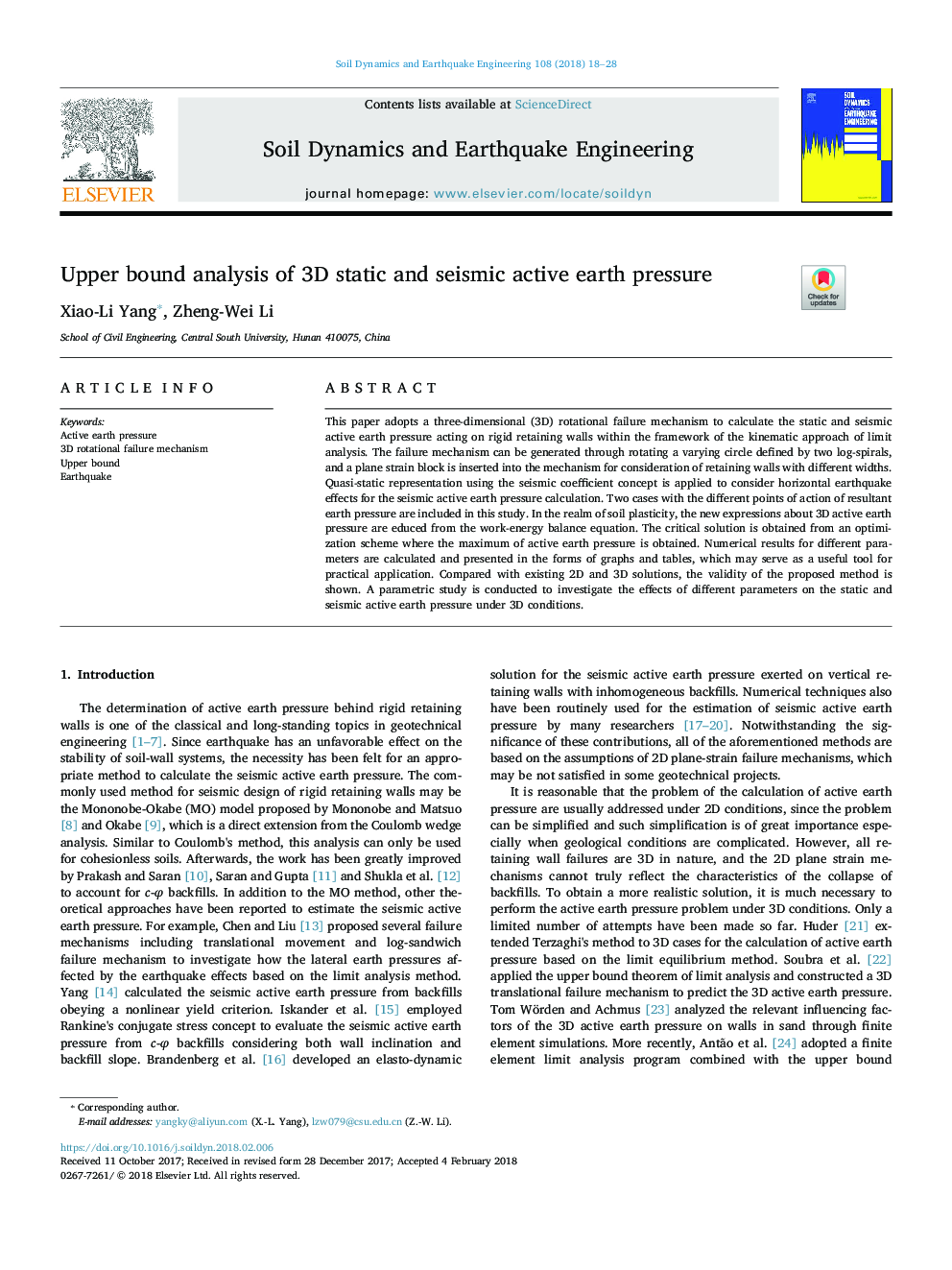| Article ID | Journal | Published Year | Pages | File Type |
|---|---|---|---|---|
| 6770465 | Soil Dynamics and Earthquake Engineering | 2018 | 11 Pages |
Abstract
This paper adopts a three-dimensional (3D) rotational failure mechanism to calculate the static and seismic active earth pressure acting on rigid retaining walls within the framework of the kinematic approach of limit analysis. The failure mechanism can be generated through rotating a varying circle defined by two log-spirals, and a plane strain block is inserted into the mechanism for consideration of retaining walls with different widths. Quasi-static representation using the seismic coefficient concept is applied to consider horizontal earthquake effects for the seismic active earth pressure calculation. Two cases with the different points of action of resultant earth pressure are included in this study. In the realm of soil plasticity, the new expressions about 3D active earth pressure are educed from the work-energy balance equation. The critical solution is obtained from an optimization scheme where the maximum of active earth pressure is obtained. Numerical results for different parameters are calculated and presented in the forms of graphs and tables, which may serve as a useful tool for practical application. Compared with existing 2D and 3D solutions, the validity of the proposed method is shown. A parametric study is conducted to investigate the effects of different parameters on the static and seismic active earth pressure under 3D conditions.
Related Topics
Physical Sciences and Engineering
Earth and Planetary Sciences
Geotechnical Engineering and Engineering Geology
Authors
Xiao-Li Yang, Zheng-Wei Li,
